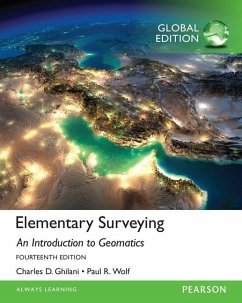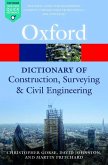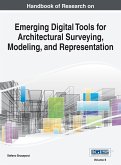For Surveying courses offered in Civil Engineering departments
This highly readable, best-selling text presents basic concepts and practical material in each of the areas fundamental to modern surveying (geomatics) practice. Its depth and breadth are ideal for self-study. Elementary Surveying, Fourteenth Edition, is updated throughout to reflect the latest advances and technology.
Teaching and Learning Experience
This program will provide a better teaching and learning experience—for you and your students. It will help:
Emphasize the Theory of Errors in Surveying Work: Common errors and mistakes are listed to remind students to exercise caution in their work.
Use Strong Pedagogy Tools to Teach: Numerous worked example problems, figures, illustrations, and end-of-chapter problems help students apply concepts.
Reflect the Latest Advances in Technology: To keep your course current and relevant, this edition covers the latest advancements in surveying technology.
Features + Benefits
Emphasize the Theory of Errors in Surveying Work
At the end of each chapter, common errors and mistakes related to the topic covered are listed to remind students to exercise caution in their work.
Practical suggestions from the authors’ years of experience are interjected throughout the text.
Use Strong Pedagogy Tools to Teach
More than 400 figures and illustrations help clarify discussions.
Numerous worked example problems illustrate computational procedures.
Over 1000 end-of-chapter problems help students apply concepts.
UPDATED: Many of the 1000 after-chapter problems have been rewritten so that instructors can create new assignments for their students.
Solutions to Selected Problems are available in an Appendix for students to check their work.
The Companion Website features the following resources:
UPDATED: Updated versions of Stats, Wolfpack, and Matrix are included on the Companion website www.pearsonhighered.com/ghilani .
These programs contain options for statistical computations, traverse computations for polygon, link, and radial traverses; area calculations; astronomical azimuth reduction; two-dimensional coordinate transformations; horizontal and vertical curve computations; and least squares adjustments.
Mathcad® worksheets and Excel® spreadsheets are included.
The Mercator, Albers Equal Area, Oblique Stereographic, and Oblique Mercator map projections are included to give students extra experience with map projections.
Every new copy of the book comes with access to Video Solutions and a Pearson eText. Video solutions are complete, step-by-step solution walkthroughs of representative homework problems. The Pearson eText is a complete on-line version of the book that includes highlighting, note-taking and search capabilities. These resources can be accessed on the Companion Website.
NEW: Seven new Video Solutions demonstrate instrumental procedures and record keeping.
An Instructor’s Manual is available to qualifying instructors on the Companion Website. Contact your Pearson Representative for information on how to access them.
1 Introduction 1.1 Definition of Surveying
1.2 Geomatics
1.3 History of Surveying
1.4 Geodetic and Plane Surveys
1.5 Importance of Surveying
1.6 Specialized Types of Surveys
1.7 Surveying Safety
1.8 Land and Geographic Information Systems
1.9 Federal Surveying and Mapping Agencies
1.10 The Surveying Profession
1.11 Professional Surveying Organizations
1.12 Surveying on the Internet
1.13 Future Challenges in Surveying
Problems
Bibliography
2 Units, Significant Figures, and Field Notes
Part I ∉ Units and Significant Figures
2.1 Introduction
2.2 Units of Measurement
2.3 International System of Units (SI)
2.4 Significant Figures
2.5 Rounding Off Numbers
Part II ∉ Field Notes
2.6 Field Notes
2.7 General Requirements of Handwritten Field Notes
2.8 Types of Field Books
2.9 Kinds of Notes
2.10 Arrangements of Notes
2.11 Suggestions for Recording Notes
2.12 Introduction to Survey Controllers
2.13 Transfer of Files from Survey Controllers
2.14 Digital Data File Management
2.15 Advantages and Disadvantages of Survey Controllers
Problems
Bibliography
3 Theory of Errors in Observations
3.1 Introduction
3.2 Direct and Indirect Observations
3.3 Errors in Measurements
3.4 Mistakes
3.5 Sources of Errors in Making Observations
3.6 Types of Errors
3.7 Precision and Accuracy
3.8 Eliminating Mistakes and Systematic Errors
3.9 Probability
3.10 Most Probable Value
3.11 Residuals
3.12 Occurrence of Random Errors
3.13 General Laws of Probability
3.14 Measures of Precision
3.15 Interpretation of Standard Deviation
3.16 The 50, 90, and 95 Percent Errors
3.17 Error Propagation
3.17.1 Error of a Sum
3.17.2 Error of a Series
3.17.3 Error of a Product
3.17.4 Error of the Mean
3.18 Applications
3.19 Conditional Adjustment of Observations
3.20 Weights of Observations
3.21 Least-Squares Adjustment
3.22 Using Software
Problems
Bibliography
4 Leveling–Theory, Methods, and Equipment
Part I ∉ Leveling–Theory and Methods
4.1 Introduction
4.2 Definitions
4.3 North American Vertical Datum
4.4 Curvature and Refraction
4.5 Methods for Determining Differences in Elevation
4.5.1 Measuring Vertical Distances by Taping or Electronic Methods
4.5.2 Differential Leveling
4.5.3 Barometric Leveling
4.5.4 Trigonometric Leveling
Part II ∉ Equipment for Differential Leveling
4.6 Categories of Levels
4.7 Telescopes
4.8 Level Vials
4.9 Tilting Levels
4.10 Automatic Levels
4.11 Digital Levels
4.12 Tripods
4.13 Hand Level
4.14 Level Rods
4.15 Testing and Adjusting Levels
4.15.1 Requirements for Testing and Adjusting Instruments
4.15.2 Adjusting for Parallax
4.15.3 Testing and Adjusting Level Vials
4.15.4 Preliminary Adjustment of the Horizontal Cross Hair
4.15.5 Testing and Adjusting the Line of Sight
Problems
Bibliography
5 Leveling–Field Procedures and Computations
5.1 Introduction
5.2 Carrying and Setting Up a Level
5.3 Duties of a Rodperson
5.4 Differential Leveling
5.5 Precision
5.6 Adjustments of Simple Level Circuits
5.7 Reciprocal Leveling
5.8 Three-Wire Leveling
5.9 Profile Leveling
5.9.1 Staking and Stationing the Reference Line
5.9.2 Field Procedures for Profile Leveling
5.9.3 Drawing and Using the Profile
5.10 Grid, Cross-Section, or Borrow-Pit Leveling
5.11 Use of the Hand Level
5.12 Sources of Error in Leveling
5.12.1 Instrumental Errors
5.12.2 Natural Errors
5.12.3 Personal Errors
5.13 Mistakes
5.14 Reducing Errors and Eliminating Mistakes
5.15 Using Software
Problems
Bibliography
6 Distance Measurement
Part I ∉ Methods for Measuring Distances
6.1 Introduction
6.2 Summary of Methods for Making Linear Measurements
6.3 Pacing
6.4 Odometer Readings
6.5 Optical Rangefinders
6.6 Tacheometry
6.7 Subtense Bar
Part II ∉ Distance Measurements by Taping
6.8 Introduction to Taping
6.9 Taping Equipment and Accessories
6.10 Care of Taping Equipment
6.11 Taping on Level Ground
6.11.1 Lining In
6.11.2 Applying Tension
6.11.3 Plumbing
6.11.4 Marking Tape Lengths
6.11.5 Reading the Tape
6.11.6 Recording the Distance
6.12 Horizontal Measurements on Sloping Ground
6.13 Slope Measurements
6.14 Sources of Error in Taping
6.14.1 Incorrect Length of Tape
6.14.2 Temperature Other Than Standard
6.14.3 Inconsistent Pull
6.14.4 Sag
6.14.5 Tape Not Horizontal and Tape Off-Line
6.14.6 Improper Plumbing
6.14.7 Faulty Marking
6.14.8 Incorrect Reading or Interpolation
6.14.9 Summary of Effects of Taping Errors
Part III ∉ Electronic Distance Measurement
6.17 Introduction
6.18 Propagation of Electromagnetic Energy
6.19 Principles of Electronic Distance Measurement
6.20 Electro-Optical Instruments
6.21 Total Station Instruments
6.22 EDM Instruments Without Reflectors
6.23 Computing Horizontal Lengths From Slope Distances
6.23.1 Reduction of Short Lines by Elevation Differences
6.23.2 Reduction of Short Lines by Zenith or Altitude Angle
6.24 Errors in Electronic Distance Measurement
6.24.1 Personal Errors
6.24.2 Instrumental Errors
6.24.3 Natural Errors
6.25 Using Software
Problems
Bibliography
7 Angles, Azimuths, and Bearings
7.1 Introduction
7.2 Units of Angle Measurement
7.3 Kinds of Horizontal Angles
7.4 Direction of a Line
7.5 Azimuths
7.6 Bearings
7.7 Comparison of Azimuths and Bearings
7.8 Computing Azimuths
7.9 Computing Bearings
7.10 The Compass and The Earth’s Magnetic Field
7.11 Magnetic Declination
7.12 Variations in Magnetic Declination
7.13 Software for Determining Magnetic Declination
7.14 Local Attraction
7.15 Typical Magnetic Declination Problems
7.16 Mistakes
Problems
Bibliography
8 Total Station Instruments; Angle Observations
Part I ∉ Total Station Instruments
8.1 Introduction
8.2 Characteristics of Total Station Instruments
8.3 Functions Performed by Total Station Instruments
8.4 Parts of a Total Station Instrument
8.5 Handling and Setting Up a Total Station Instrument
8.6 Servo-Driven and Remotely Operated Total Station Instruments
Part II ∉ Angle Observations
8.7 Relationship of Angles and Distances
8.8 Observing Horizontal Angles with Total Station Instruments
8.9 Observing Multiple Horizontal Angles by the Direction Method
8.10 Closing the Horizon
8.11 Observing Deflection Angles
8.12 Observing Azimuths
8.13 Observing Vertical Angles
8.14 Sights and Marks
8.15 Prolonging a Straight Line
8.16 Balancing-In
8.17 Random Traverse
8.18 Total Stations for Determining Elevation Differences
8.19 Adjustment of Total Station Instruments and Their Accessories
8.19.1 Adjustment of Plate-Level Vials
8.19.2 Adjustment of Tripods
8.19.3 Adjustment of Tribrachs
8.19.4 Adjustment of Plummets
8.19.5 Adjustment of Circular Level Bubbles
8.20 Sources of Error in Total Station Work
8.20.1 Instrumental Errors
8.20.2 Natu
For Surveying courses offered in Civil Engineering departments This highly readable, best-selling text presents basic concepts and practical material in each of the areas fundamental to modern surveying (geomatics) practice. Its depth and breadth are ideal for self-study. Elementary Surveying, Fourteenth Edition, is updated throughout to reflect the latest advances and technology. Teaching and Learning Experience This program will provide a better teaching and learning experience—for you and your students. It will help: * Emphasize the Theory of Errors in Surveying Work: Common errors and mistakes are listed to remind students to exercise caution in their work. * Use Strong Pedagogy Tools to Teach: Numerous worked example problems, figures, illustrations, and end-of-chapter problems help students apply concepts. * Reflect the Latest Advances in Technology: To keep your course current and relevant, this edition covers the latest advancements in surveying technology.
Hinweis: Dieser Artikel kann nur an eine deutsche Lieferadresse ausgeliefert werden.
This highly readable, best-selling text presents basic concepts and practical material in each of the areas fundamental to modern surveying (geomatics) practice. Its depth and breadth are ideal for self-study. Elementary Surveying, Fourteenth Edition, is updated throughout to reflect the latest advances and technology.
Teaching and Learning Experience
This program will provide a better teaching and learning experience—for you and your students. It will help:
Emphasize the Theory of Errors in Surveying Work: Common errors and mistakes are listed to remind students to exercise caution in their work.
Use Strong Pedagogy Tools to Teach: Numerous worked example problems, figures, illustrations, and end-of-chapter problems help students apply concepts.
Reflect the Latest Advances in Technology: To keep your course current and relevant, this edition covers the latest advancements in surveying technology.
Features + Benefits
Emphasize the Theory of Errors in Surveying Work
At the end of each chapter, common errors and mistakes related to the topic covered are listed to remind students to exercise caution in their work.
Practical suggestions from the authors’ years of experience are interjected throughout the text.
Use Strong Pedagogy Tools to Teach
More than 400 figures and illustrations help clarify discussions.
Numerous worked example problems illustrate computational procedures.
Over 1000 end-of-chapter problems help students apply concepts.
UPDATED: Many of the 1000 after-chapter problems have been rewritten so that instructors can create new assignments for their students.
Solutions to Selected Problems are available in an Appendix for students to check their work.
The Companion Website features the following resources:
UPDATED: Updated versions of Stats, Wolfpack, and Matrix are included on the Companion website www.pearsonhighered.com/ghilani .
These programs contain options for statistical computations, traverse computations for polygon, link, and radial traverses; area calculations; astronomical azimuth reduction; two-dimensional coordinate transformations; horizontal and vertical curve computations; and least squares adjustments.
Mathcad® worksheets and Excel® spreadsheets are included.
The Mercator, Albers Equal Area, Oblique Stereographic, and Oblique Mercator map projections are included to give students extra experience with map projections.
Every new copy of the book comes with access to Video Solutions and a Pearson eText. Video solutions are complete, step-by-step solution walkthroughs of representative homework problems. The Pearson eText is a complete on-line version of the book that includes highlighting, note-taking and search capabilities. These resources can be accessed on the Companion Website.
NEW: Seven new Video Solutions demonstrate instrumental procedures and record keeping.
An Instructor’s Manual is available to qualifying instructors on the Companion Website. Contact your Pearson Representative for information on how to access them.
1 Introduction 1.1 Definition of Surveying
1.2 Geomatics
1.3 History of Surveying
1.4 Geodetic and Plane Surveys
1.5 Importance of Surveying
1.6 Specialized Types of Surveys
1.7 Surveying Safety
1.8 Land and Geographic Information Systems
1.9 Federal Surveying and Mapping Agencies
1.10 The Surveying Profession
1.11 Professional Surveying Organizations
1.12 Surveying on the Internet
1.13 Future Challenges in Surveying
Problems
Bibliography
2 Units, Significant Figures, and Field Notes
Part I ∉ Units and Significant Figures
2.1 Introduction
2.2 Units of Measurement
2.3 International System of Units (SI)
2.4 Significant Figures
2.5 Rounding Off Numbers
Part II ∉ Field Notes
2.6 Field Notes
2.7 General Requirements of Handwritten Field Notes
2.8 Types of Field Books
2.9 Kinds of Notes
2.10 Arrangements of Notes
2.11 Suggestions for Recording Notes
2.12 Introduction to Survey Controllers
2.13 Transfer of Files from Survey Controllers
2.14 Digital Data File Management
2.15 Advantages and Disadvantages of Survey Controllers
Problems
Bibliography
3 Theory of Errors in Observations
3.1 Introduction
3.2 Direct and Indirect Observations
3.3 Errors in Measurements
3.4 Mistakes
3.5 Sources of Errors in Making Observations
3.6 Types of Errors
3.7 Precision and Accuracy
3.8 Eliminating Mistakes and Systematic Errors
3.9 Probability
3.10 Most Probable Value
3.11 Residuals
3.12 Occurrence of Random Errors
3.13 General Laws of Probability
3.14 Measures of Precision
3.15 Interpretation of Standard Deviation
3.16 The 50, 90, and 95 Percent Errors
3.17 Error Propagation
3.17.1 Error of a Sum
3.17.2 Error of a Series
3.17.3 Error of a Product
3.17.4 Error of the Mean
3.18 Applications
3.19 Conditional Adjustment of Observations
3.20 Weights of Observations
3.21 Least-Squares Adjustment
3.22 Using Software
Problems
Bibliography
4 Leveling–Theory, Methods, and Equipment
Part I ∉ Leveling–Theory and Methods
4.1 Introduction
4.2 Definitions
4.3 North American Vertical Datum
4.4 Curvature and Refraction
4.5 Methods for Determining Differences in Elevation
4.5.1 Measuring Vertical Distances by Taping or Electronic Methods
4.5.2 Differential Leveling
4.5.3 Barometric Leveling
4.5.4 Trigonometric Leveling
Part II ∉ Equipment for Differential Leveling
4.6 Categories of Levels
4.7 Telescopes
4.8 Level Vials
4.9 Tilting Levels
4.10 Automatic Levels
4.11 Digital Levels
4.12 Tripods
4.13 Hand Level
4.14 Level Rods
4.15 Testing and Adjusting Levels
4.15.1 Requirements for Testing and Adjusting Instruments
4.15.2 Adjusting for Parallax
4.15.3 Testing and Adjusting Level Vials
4.15.4 Preliminary Adjustment of the Horizontal Cross Hair
4.15.5 Testing and Adjusting the Line of Sight
Problems
Bibliography
5 Leveling–Field Procedures and Computations
5.1 Introduction
5.2 Carrying and Setting Up a Level
5.3 Duties of a Rodperson
5.4 Differential Leveling
5.5 Precision
5.6 Adjustments of Simple Level Circuits
5.7 Reciprocal Leveling
5.8 Three-Wire Leveling
5.9 Profile Leveling
5.9.1 Staking and Stationing the Reference Line
5.9.2 Field Procedures for Profile Leveling
5.9.3 Drawing and Using the Profile
5.10 Grid, Cross-Section, or Borrow-Pit Leveling
5.11 Use of the Hand Level
5.12 Sources of Error in Leveling
5.12.1 Instrumental Errors
5.12.2 Natural Errors
5.12.3 Personal Errors
5.13 Mistakes
5.14 Reducing Errors and Eliminating Mistakes
5.15 Using Software
Problems
Bibliography
6 Distance Measurement
Part I ∉ Methods for Measuring Distances
6.1 Introduction
6.2 Summary of Methods for Making Linear Measurements
6.3 Pacing
6.4 Odometer Readings
6.5 Optical Rangefinders
6.6 Tacheometry
6.7 Subtense Bar
Part II ∉ Distance Measurements by Taping
6.8 Introduction to Taping
6.9 Taping Equipment and Accessories
6.10 Care of Taping Equipment
6.11 Taping on Level Ground
6.11.1 Lining In
6.11.2 Applying Tension
6.11.3 Plumbing
6.11.4 Marking Tape Lengths
6.11.5 Reading the Tape
6.11.6 Recording the Distance
6.12 Horizontal Measurements on Sloping Ground
6.13 Slope Measurements
6.14 Sources of Error in Taping
6.14.1 Incorrect Length of Tape
6.14.2 Temperature Other Than Standard
6.14.3 Inconsistent Pull
6.14.4 Sag
6.14.5 Tape Not Horizontal and Tape Off-Line
6.14.6 Improper Plumbing
6.14.7 Faulty Marking
6.14.8 Incorrect Reading or Interpolation
6.14.9 Summary of Effects of Taping Errors
Part III ∉ Electronic Distance Measurement
6.17 Introduction
6.18 Propagation of Electromagnetic Energy
6.19 Principles of Electronic Distance Measurement
6.20 Electro-Optical Instruments
6.21 Total Station Instruments
6.22 EDM Instruments Without Reflectors
6.23 Computing Horizontal Lengths From Slope Distances
6.23.1 Reduction of Short Lines by Elevation Differences
6.23.2 Reduction of Short Lines by Zenith or Altitude Angle
6.24 Errors in Electronic Distance Measurement
6.24.1 Personal Errors
6.24.2 Instrumental Errors
6.24.3 Natural Errors
6.25 Using Software
Problems
Bibliography
7 Angles, Azimuths, and Bearings
7.1 Introduction
7.2 Units of Angle Measurement
7.3 Kinds of Horizontal Angles
7.4 Direction of a Line
7.5 Azimuths
7.6 Bearings
7.7 Comparison of Azimuths and Bearings
7.8 Computing Azimuths
7.9 Computing Bearings
7.10 The Compass and The Earth’s Magnetic Field
7.11 Magnetic Declination
7.12 Variations in Magnetic Declination
7.13 Software for Determining Magnetic Declination
7.14 Local Attraction
7.15 Typical Magnetic Declination Problems
7.16 Mistakes
Problems
Bibliography
8 Total Station Instruments; Angle Observations
Part I ∉ Total Station Instruments
8.1 Introduction
8.2 Characteristics of Total Station Instruments
8.3 Functions Performed by Total Station Instruments
8.4 Parts of a Total Station Instrument
8.5 Handling and Setting Up a Total Station Instrument
8.6 Servo-Driven and Remotely Operated Total Station Instruments
Part II ∉ Angle Observations
8.7 Relationship of Angles and Distances
8.8 Observing Horizontal Angles with Total Station Instruments
8.9 Observing Multiple Horizontal Angles by the Direction Method
8.10 Closing the Horizon
8.11 Observing Deflection Angles
8.12 Observing Azimuths
8.13 Observing Vertical Angles
8.14 Sights and Marks
8.15 Prolonging a Straight Line
8.16 Balancing-In
8.17 Random Traverse
8.18 Total Stations for Determining Elevation Differences
8.19 Adjustment of Total Station Instruments and Their Accessories
8.19.1 Adjustment of Plate-Level Vials
8.19.2 Adjustment of Tripods
8.19.3 Adjustment of Tribrachs
8.19.4 Adjustment of Plummets
8.19.5 Adjustment of Circular Level Bubbles
8.20 Sources of Error in Total Station Work
8.20.1 Instrumental Errors
8.20.2 Natu
For Surveying courses offered in Civil Engineering departments This highly readable, best-selling text presents basic concepts and practical material in each of the areas fundamental to modern surveying (geomatics) practice. Its depth and breadth are ideal for self-study. Elementary Surveying, Fourteenth Edition, is updated throughout to reflect the latest advances and technology. Teaching and Learning Experience This program will provide a better teaching and learning experience—for you and your students. It will help: * Emphasize the Theory of Errors in Surveying Work: Common errors and mistakes are listed to remind students to exercise caution in their work. * Use Strong Pedagogy Tools to Teach: Numerous worked example problems, figures, illustrations, and end-of-chapter problems help students apply concepts. * Reflect the Latest Advances in Technology: To keep your course current and relevant, this edition covers the latest advancements in surveying technology.
Hinweis: Dieser Artikel kann nur an eine deutsche Lieferadresse ausgeliefert werden.








